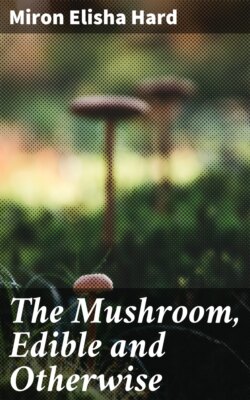Читать книгу The Mushroom, Edible and Otherwise - Miron Elisha Hard - Страница 17
Amanita. Pers.
ОглавлениеAmanita is supposed to be derived from Mount Amanus, an ancient name of a range separating Cilicia from Syria. It is supposed that Galen first brought specimens of this fungus from that region.
The genus Amanita has both a volva and veil. The spores are white and the stem is readily separable from the cap. The volva is universal at first, enveloping the young plant, yet distinct and free from the cuticle of the pileus.
This genus contains some of the most deadly poisonous mushrooms, although a few are known to be very good. There is a large number of species—about 75 being known, 42 of which have been found in this country—a few being quite common in this state. All the Amanita are terrestrial plants, mostly solitary in their habits, and chiefly found in the woods, or in well wooded grounds.
In the button stage it resembles a small egg or puff-ball, as will be seen in Figure 6, page 11, and great care should be taken to distinguish it from the latter, if one is hunting puff-balls to eat; yet the danger is not great, since the volva usually breaks before the plant comes through the ground.
